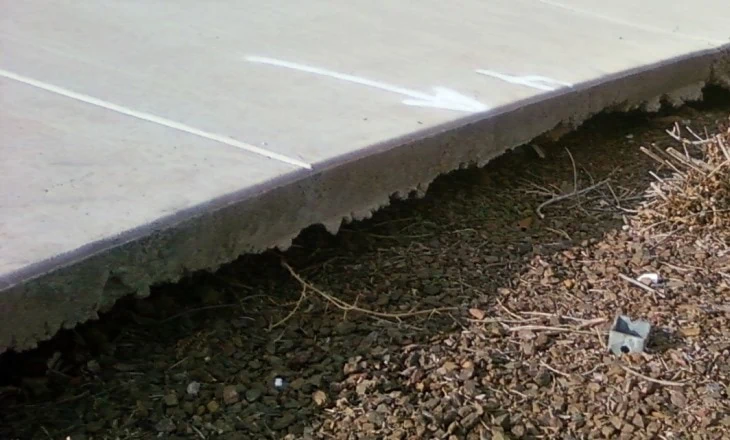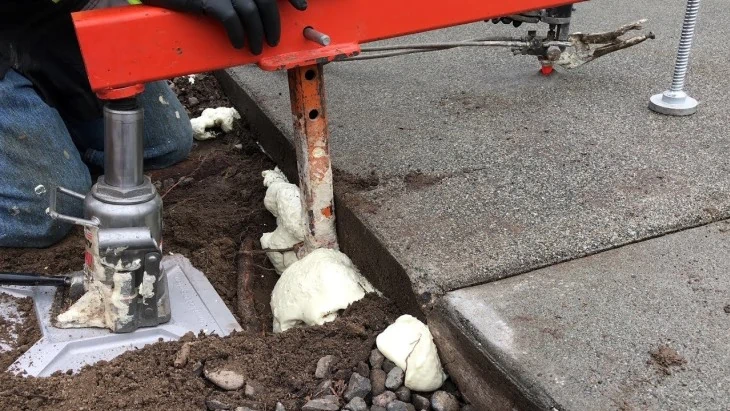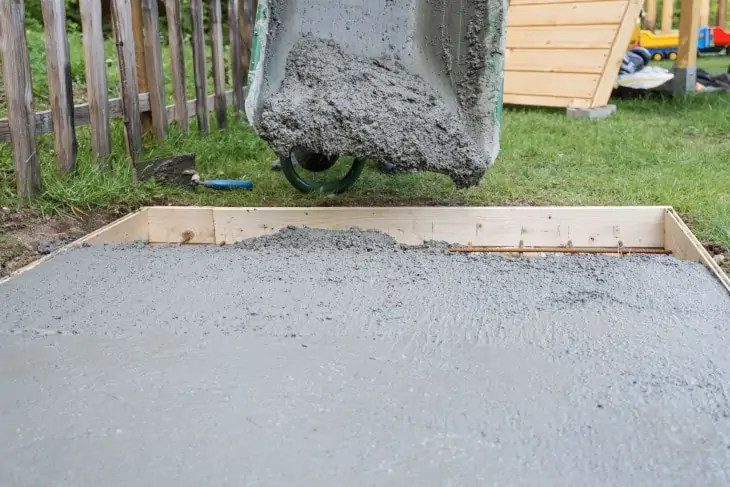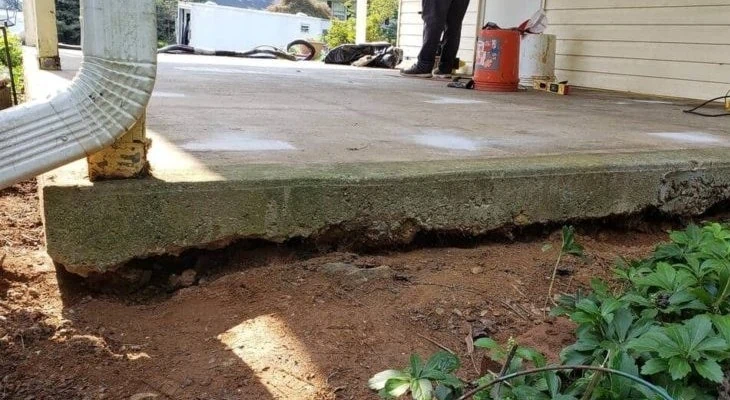If you have a void forming under a concrete slab on your property, it should be addressed promptly. Ideally, as soon as you’ve discovered the problem – if your budget allows for that, of course.
Filling a void under a concrete slab is usually done by slab jacking. This involves drilling small holes through the slab and injecting a filler material. Several options are available for the filling material. Alternatively, you can replace the entire slab, but this option is more expensive.
Table of Contents
Why You Should Never Leave Large Holes Under Concrete Slabs Unfixed

As soon as you’ve discovered a hole under a concrete slab, you should take action to get it filled. Even if the hole looks small and harmless, it usually doesn’t take long before it progresses into a bigger problem.
Eventually, this will compromise the integrity of the entire concrete slab, especially if it’s in an area where a lot of weight is applied on it on a regular basis. Driveways are a common example.
Once a concrete slab has cracked enough, it could crumble down into the hole. If this happens with someone on top of it, that could lead to serious injuries.
It can also make subsequent repairs needlessly complicated. You will have to clear out all the debris from the original slab before you can put in a new one.
Slab Jacking

Slab jacking requires some heavy tools and a bit of experience with using them, but it can be handled by most people without specialized training.
The process starts with drilling small holes through the slab. After that, filler material is carefully injected underneath. Several holes may be necessary under a larger slab to provide adequate coverage.
With some types of materials, such as expanding foam, filling the hole will also raise the slab to some extent. This can help you correct any improper slopes that have developed due to the void. Make sure to avoid overfilling, as that could raise the slab beyond its original level.
Finally, the drilled holes are filled, usually with concrete or a similar mixture. Ideally, you’ll want to match the material used for the slab itself. If it’s pure concrete, that’s easy enough to fill. Things can get a bit trickier with composite slabs.
If you don’t care too much about replicating the original appearance of the material though, you can safely use concrete.
The most important consideration for a successful slab jacking job is to choose the right filler material. Your three main options are foam, concrete, and silica sand. Other alternatives are also available, but those three can cover most situations well enough.
Foam
Expanding foam is a very common choice for slab jacking. It can help you fill a void under a concrete slab of any size with a small number of holes. The foam will start to expand after being injected, eventually filling the whole available space.
This means that you only need a few strategically drilled holes to cover the entire void without any issues.
However, some users avoid foam due to its lower durability and susceptibility to environmental effects like moisture. Depending on where your slab is located – and more importantly, what’s underneath it – you may want to go with concrete or silica sand.
Concrete
Concrete is great for filling a void under a slab, as long as you can pour it in easily. Small holes are usually not sufficient for this.
If you have side access, this would be ideal. Don’t be afraid to dig up some ground to expose the full hole under your slab. As long as you don’t impact any ground that supports other slabs, and make sure to put it back in place when you’re done, this should be fine.
Some might also recommend using just cement without mixing it into concrete. This is similar to using sand, but is not recommended if heavy moisture is an issue.
Cement will eventually pick up sand and other debris from the surrounding soil and might mix into concrete if the ground is wet enough. You won’t have any control over how it sets, and you may be left with additional smaller holes.
Silica Sand
Silica sand is a great option if you don’t want to use concrete or expanding foam. It’s relatively inexpensive and can be easily poured through smaller holes. You may need a larger number of holes for an even fill though.
Otherwise, you risk pouring the sand into several piles that end up creating additional holes directly underneath the concrete. If you’re using sand, you have to make sure that the entire void is filled to the top.
This is why sand should also be poured in from the side if that’s an option. You might have to pack it in tightly to ensure that there are no concealed holes deeper underneath the slab once you’re done.
Replacing the Entire Slab

If the above options don’t work for you, or your slab is too heavily damaged, you will have to replace the entire slab. This goes beyond the scope of a simple DIY project and will require heavy tools and some additional help.
Once the old slab has been removed, you can use any of the above methods to fill in the void. Typically, you’ll want to go with sand or concrete as you won’t get any of the benefits of expanding foam in this scenario.
Ensuring that the original void has been filled as thoroughly as possible is crucial. Otherwise, you’re going to get back to the exact same state sooner or later. Only this time you’ll have wasted money on a brand new concrete slab as well.
Conclusion
Filling a void under a concrete slab is not the simplest DIY task, but it’s definitely doable with household tools and materials.
Make sure to study the situation in as much detail as possible before committing to a specific filling method, or you might end up with much more serious issues than some harmless concrete splatter. And if there are good indicators that the slab is too heavily damaged, don’t hesitate to replace it completely.


Thanks Brad for the diy information. How big should the holes drilled into the concrete slab be to inject the cement and sand mix?
What kind of people can fix this as I am not an option?